We hand-pick all products. When you buy something, we may earn a commission.
Because Weight Matters: Learn What Heavyweight Denim Is All About … and Which Pair to Get?
When I got into denim 20 years ago, selvedge was the hot new thing. Today, it’s heavyweight that defines the scene.
Going heavy with your denim is a rite of passage. Nothing says commitment like selvedge so thick it feels like armour. Moving up in weight is how denimheads prove something—to themselves and to the culture.
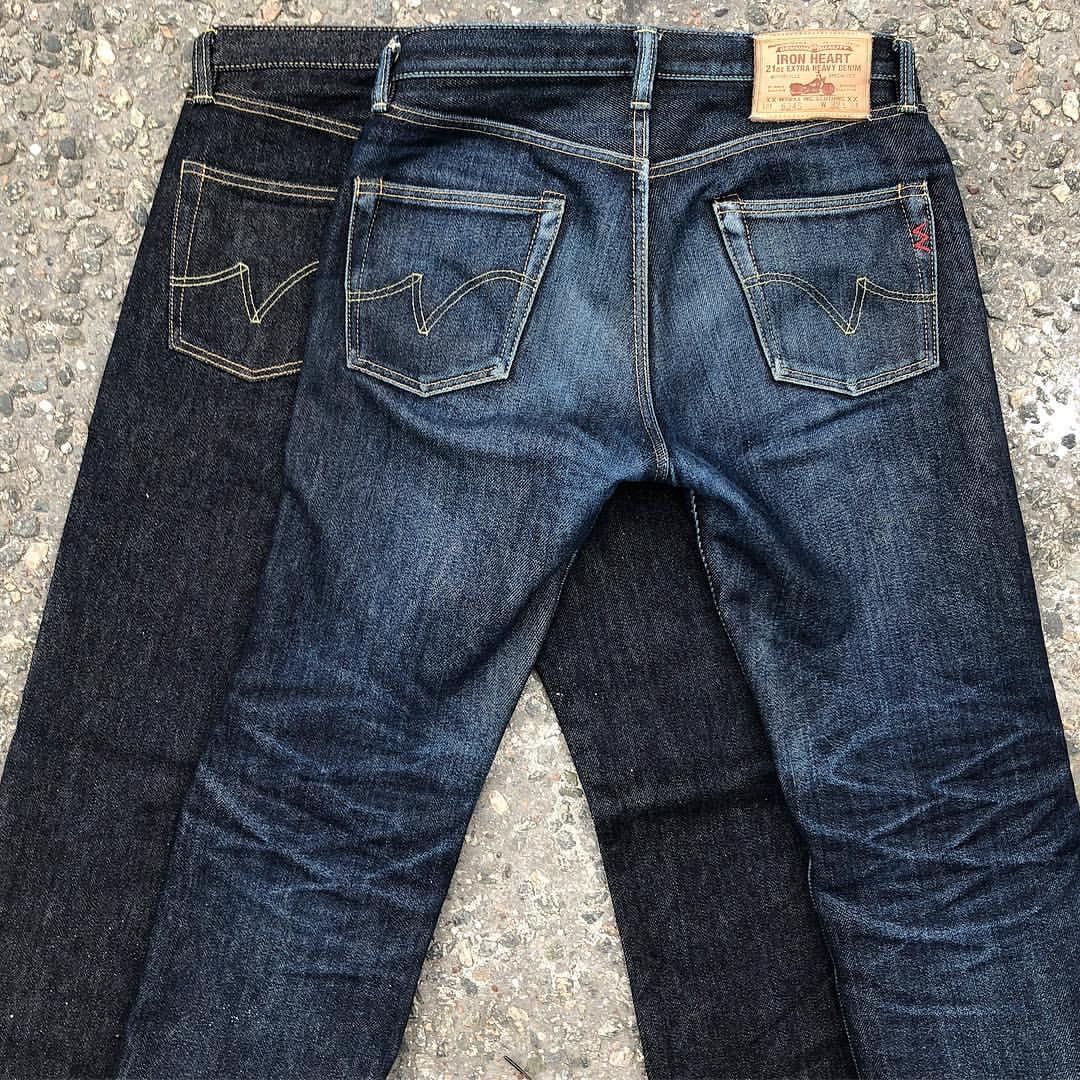
The first time I handled heavyweight denim, I knew this was something different. I didn’t take the plunge myself until a pair of Iron Heart 634S came along years later. Once I did, I understood the appeal.
TL;DR – Quick Summary (of a Very Heavy Guide)
Whether you’re new to heavyweight denim or looking for your next pair, this guide does the heavy lifting for you. I’ll explain what it is, why people chase it, and which brands make the best.
Top Picks: Start with These
Want to cut to the chase? Here are my recommendations:
- First heavy denim? Iron Heart’s 21 oz. or Samurai’s 19 oz. Kiwami.
- Want something custom? SOSO’s 20 oz. Ghost Indigo.
- Looking for the best value? Brave Star’s 21.5 oz. Gauntlet.
- Ready for serious pain? The Strike Gold 24.8 oz. Extra Hard.
Heavy Denim Explained
Before we get to the best brands that make it, we need to define what heavyweight denim actually is.
The weight of denim is measured in ounces per square yard. By my definition, anything from 16 oz. up counts as heavyweight—but some double that number.
Throughout the 20th century, 13–14 oz. denim was considered heavy (enough). These days, that’s middle-of-the-road at best. I launched my own brand with a 14.25 oz. selvedge denim, and almost immediately, people were asking: “When are you making something heavier?”
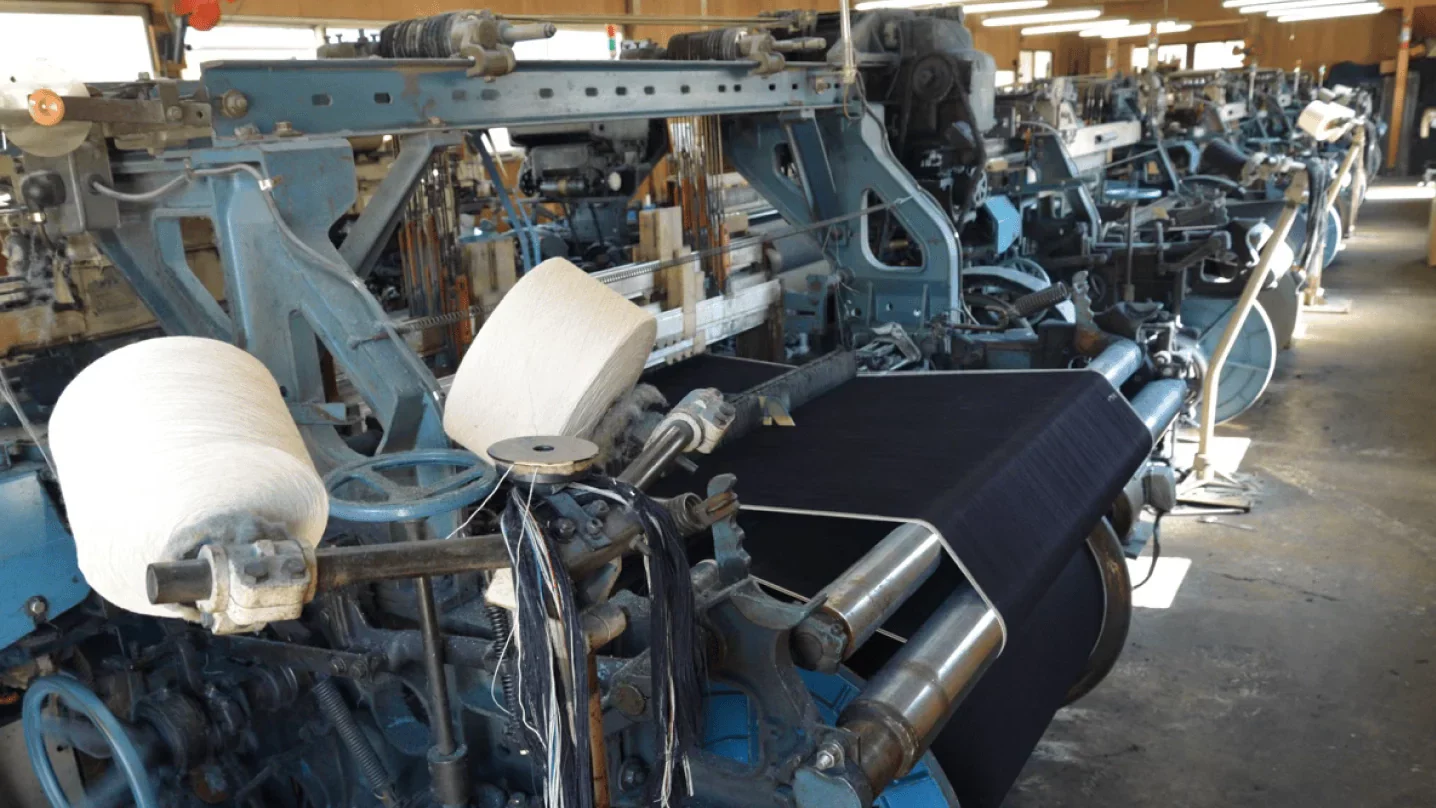
So how do mills produce denim this heavy? Not easily, that’s for sure. Technically speaking, it comes down to yarn count and weave density. Thicker cotton yarns weigh more, and the tighter they’re packed on the loom, the denser and heavier the fabric.
Samurai’s 21 oz. exemplifies the “big yarn” approach, while Iron Heart’s 21 oz. selvedge is built with a double-twisted weft that packs more cotton without making it unwearably stiff. But weight alone doesn’t tell the full story. Heavy denim can be sanforized (pre-shrunk) or unsanforized, smooth or slubby, clean or hairy.
If you’ve got more question, I’m answering 10 of the most commonly asked ones further below in the guide. But if you’re ready to take the plunge, the next step is choosing where to start.
THE PIONEERS OF HEAVYWEIGHT DENIM
Before heavy selvedge became a badge of honour, these brands defined it. They didn’t just make heavier fabrics—they built the culture around them.
Iron Heart: The Benchmark
If I say “heavy”, you say … “Iron Heart”. Because no other brand is as synonymous with heavyweight denim. Founded by Shinichi Haraki to make jeans tough enough for bikers, Iron Heart has been building its reputation on heavy selvedge since 2002.
The benchmark is the 21 oz. signature selvedge. Thanks to the double-twisted weft yarns and a looser weave, it’s more wearable than the number suggests—stubborn at first, but quick to soften into long-haul comfort and slow, steady fades.
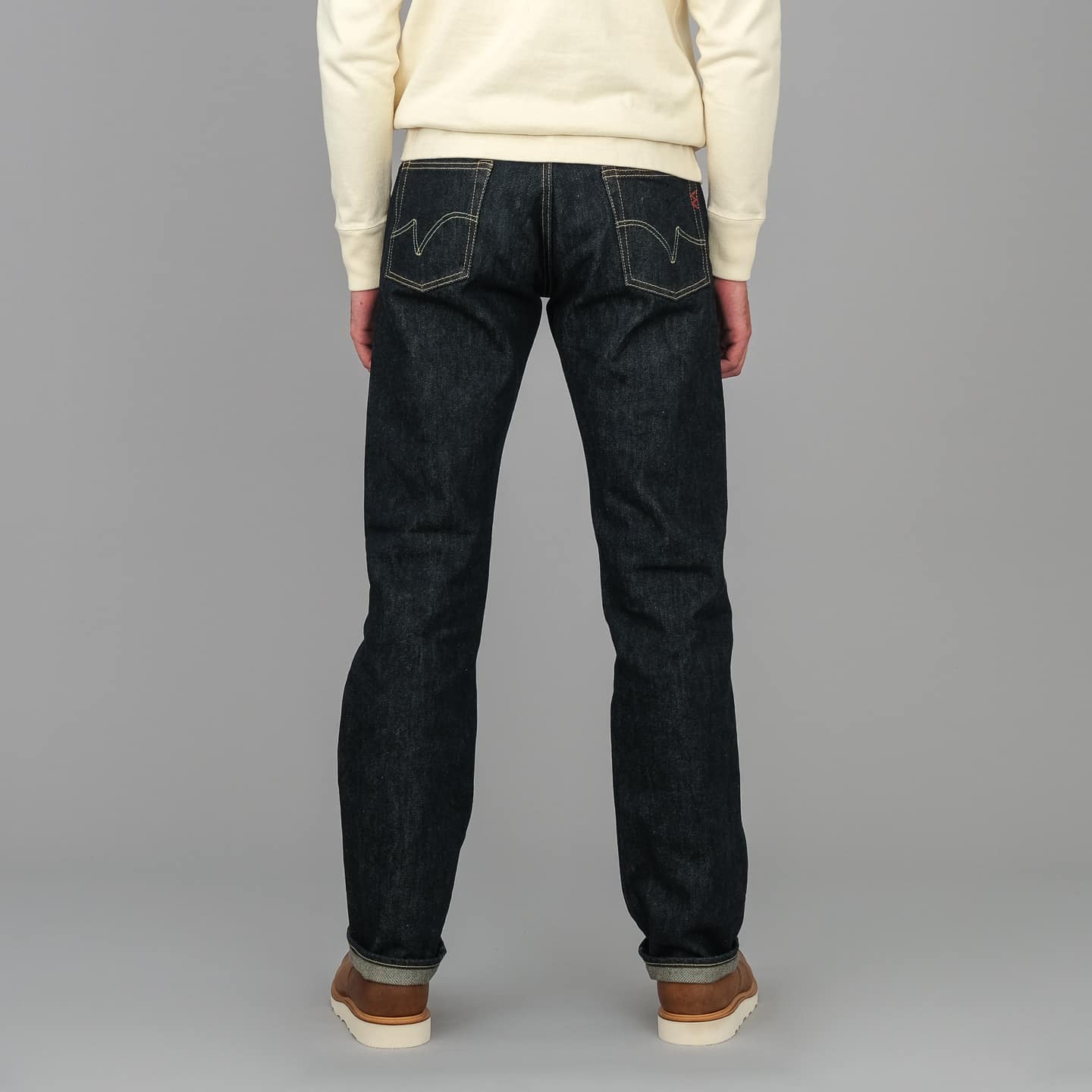
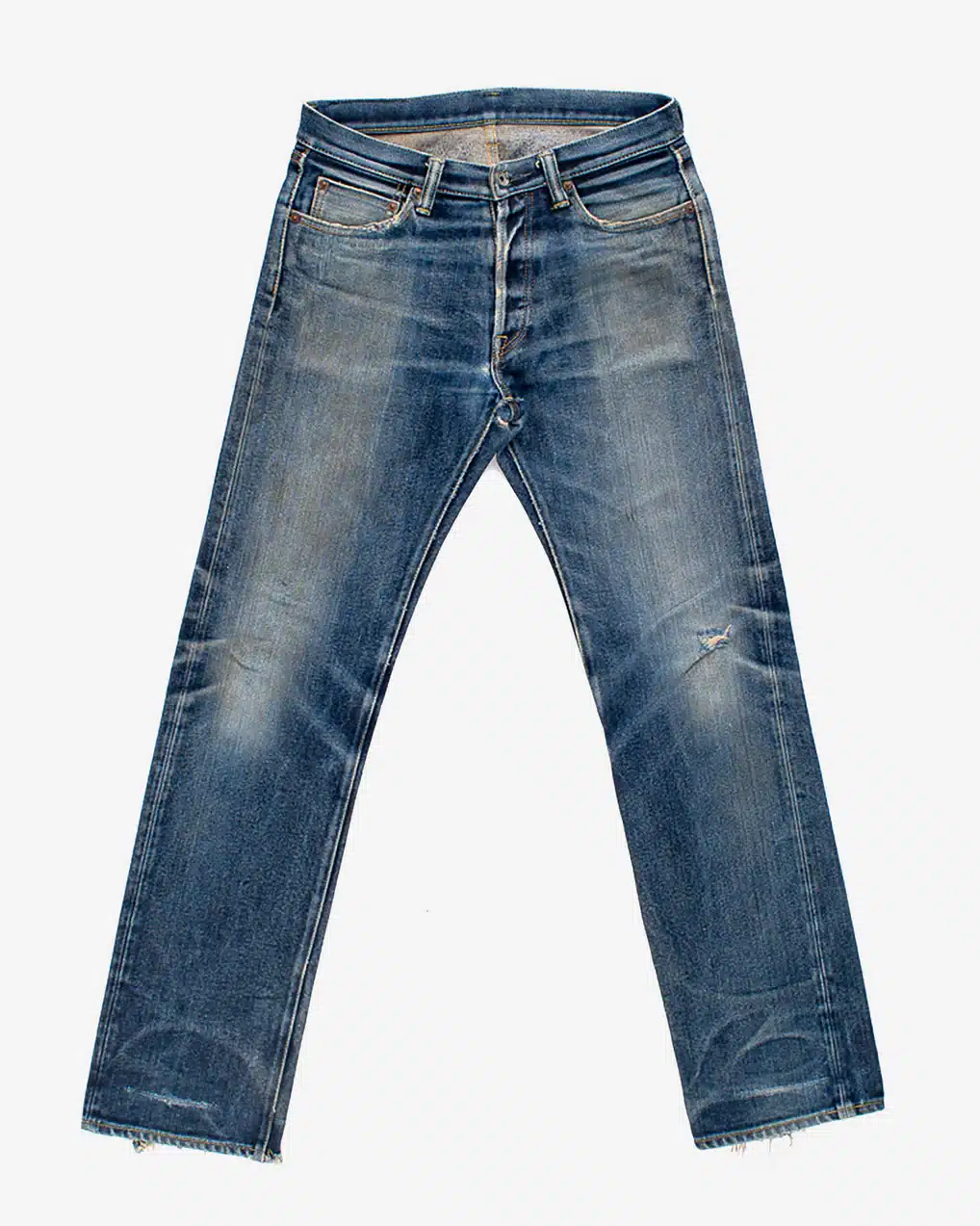
Then there’s the 25 oz. XHS (Extra Heavy Selvedge), which has become legendary in its own right. Originally introduced in 2011 for the 25th anniversary of Zurich’s VMC, it pushed the limits of what mills and sewing machines could handle.
I’ve worn both, and each shows a different side of Iron Heart’s philosophy: overengineered jeans that balance punishment with reward. If you want to understand why heavyweight denim became what it is today, this is where you start.
Iron Heart is available at: Division Road (US), Franklin & Poe (US), Brooklyn Clothing (CA), Iron Provisions (US), and of course at Iron Heart International.
Want the full breakdown of Iron Heart’s fits and fabrics? Check out my complete guide to the brand’s jeans here.
Samurai Jeans: The Warriors of Heavy Denim
A true samurai perfects his art through patience and precision. Every motion is deliberate, every stroke earned through repetition. Osaka’s Samurai Jeans embody that same devotion to craft—denim made not for ease, but for mastery.
Founded in 1997 by Toru Nogami, the brand built its name on unsanforized heavyweights that test your will. The 19 oz. Kiwami might have put Samurai on the map, but it’s the 21 oz. selvedge that made the brand legendary—a fabric that defines the brand’s identity and, possibly, the entire heavyweight movement.
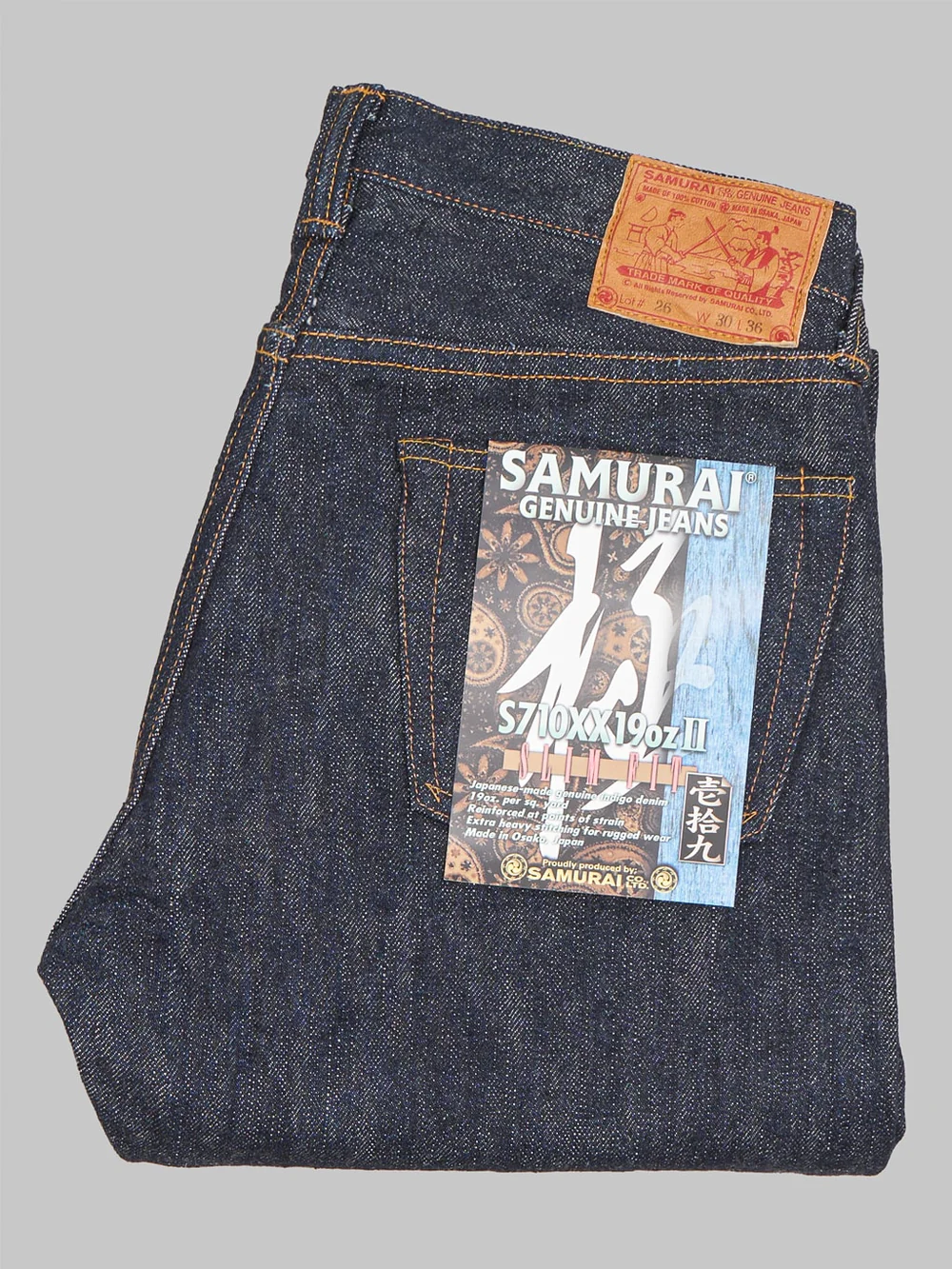

All Samurai denim is unsanforized, but you can buy them one-washed and shrunken down. Whatever you get, expect a dry, rigid hand and a vertical texture that slowly yields.
Chris Clark, who’s worn both the 19 oz. and the mid-20s 710 cuts, calls them “sandpaper at first, butter later.” His words sum up the Samurai ethos perfectly: patience, practice, and transformation.
You can buy Samurai from these retailers: Franklin & Poe (US), Brooklyn Clothing (CA), Blue in Green (US), and Redcast Heritage (ES).
Naked & Famous: The Denim Experimenters
If Iron Heart are the engineers and Samurai the purists, Naked & Famous are the mad scientists of the denim world.
Founded in Montréal in 2008 by Brandon Svarc, the brand built its reputation on doing what no one else dares—turning Japanese selvedge into a playground for experimentation.

Everything is cut, sewn, and finished in Canada, using only Japanese denim. By working closely with the most innovative mills in Okayama, Naked & Famous tries things few others would even consider—from glow-in-the-dark and scratch-and-sniff jeans to coffee-dyed and thermochromic denims that change colour with heat.

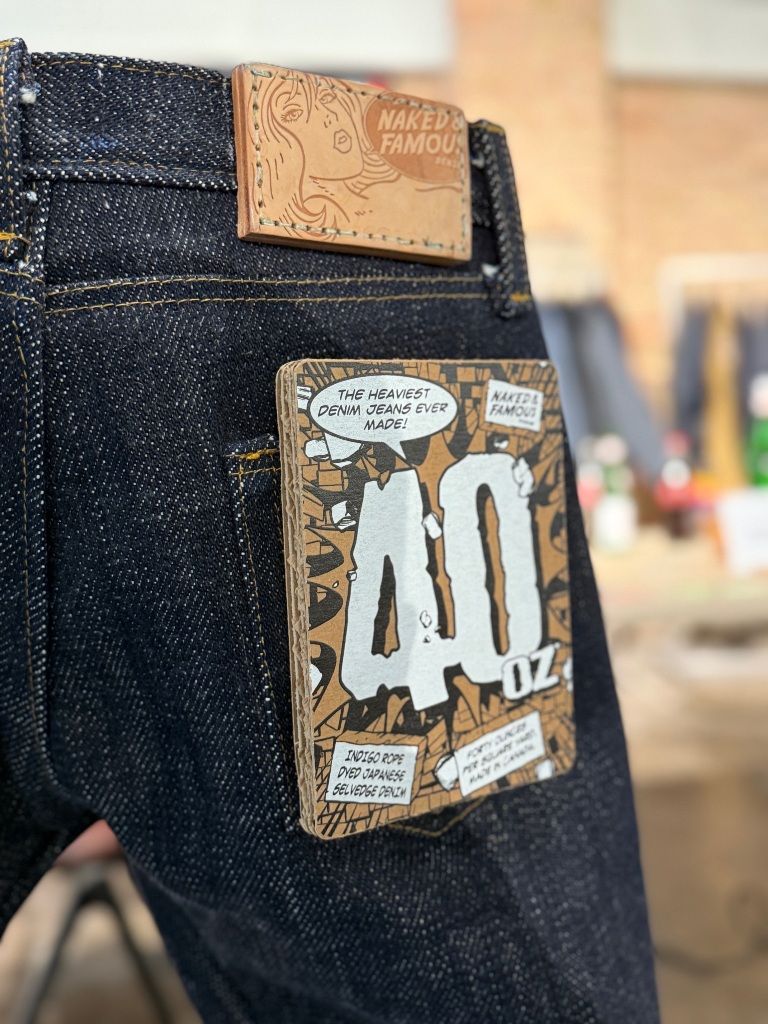
The heavyweight Elephant series has become a benchmark in its own right. Each version is a limited-run experiment with new yarns, weaves, and weights—ranging from the early 19 oz. and 22 oz. pairs.
Add to that the infamous 32 oz. (out of production since 2016), and most recently, a 40 oz. denim that’s almost unwearable but undeniably impressive.
Naked & Famous is sold at: Blue Beach Denim (TW) and Cultizm (DE)
Heavyweight on a Budget
The Unbranded Brand is Naked & Famous’ stripped-down sibling. Made in Asia from simpler fabrics and without any flashy details, the raw, unwashed authenticity is intact.
The 21 oz. Unbranded jeans retail for $150, making them the ultimate entry point for anyone curious about heavyweight denim.
WESTERN HEAVYWEIGHT SPECIALISTS
These brands bring their own approach to heavyweight denim. Different ideas, same dedication to making great jeans.
SOSO: Heavyweight Your Way
Born in Sweden and built in Thailand, SOSO has made a name for itself by giving denimheads the power to shape their own jeans. Every pair is made to order in the brand’s own factory, where craftsmanship meets experimentation.
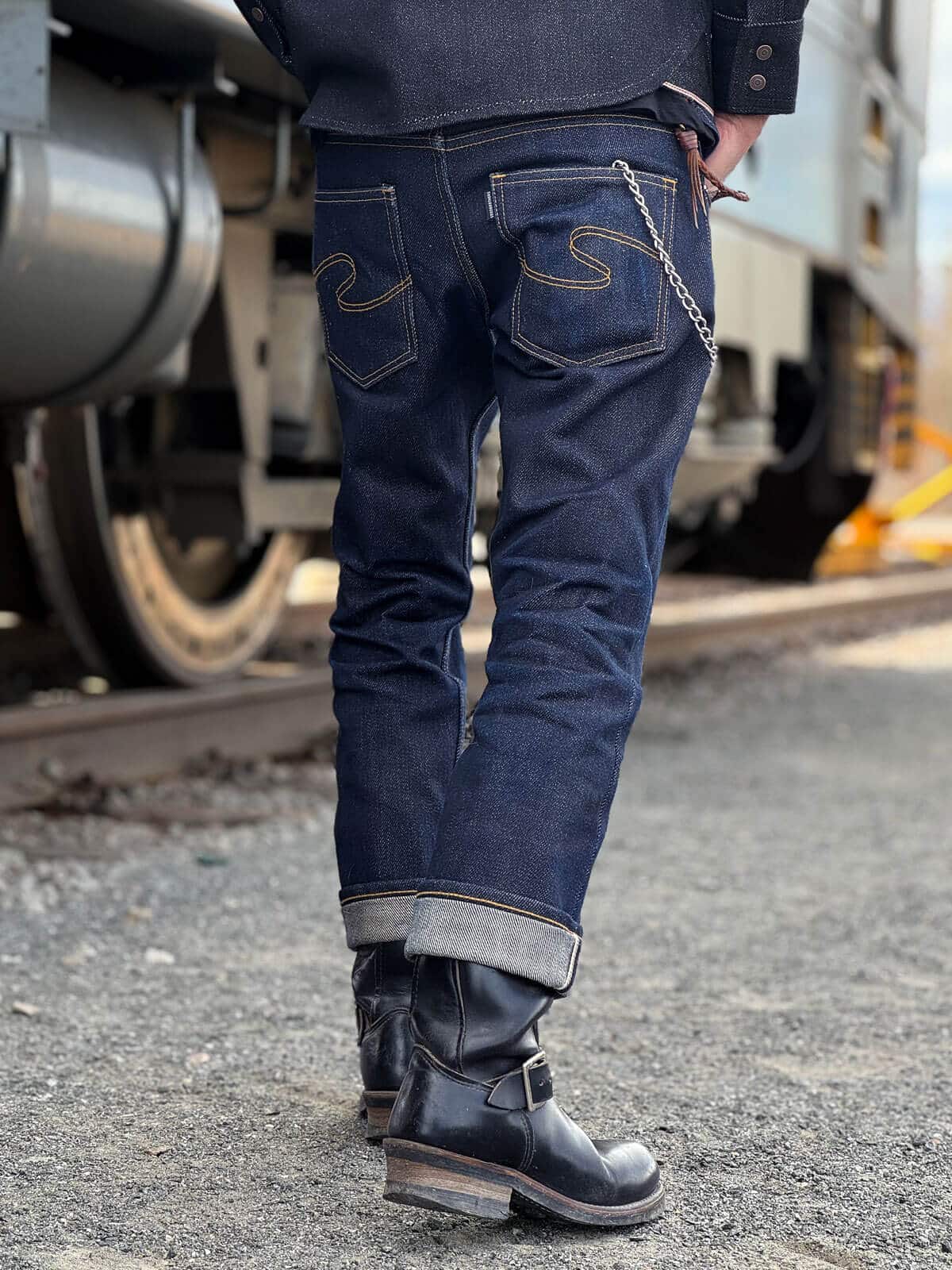
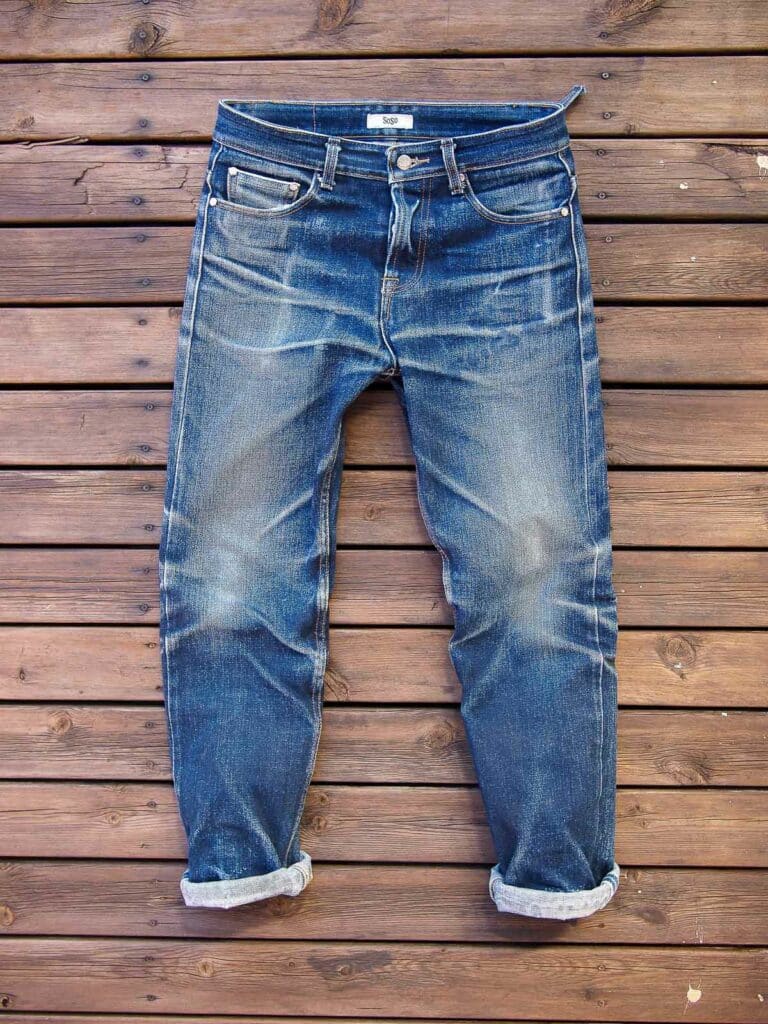
Heavy denim has become the brand’s signature. From the smooth, wearable 20 oz. Ghost to the punishing 33 oz. “Breaker of Legs”, SOSO’s lineup shows just how far raw denim can go. Most fabrics come from Japan’s specialist mills, while others are developed in-house—dense, fade-hungry, and made to last.
Longtime SOSO wearer Tobias Östling calls breaking in the heavyweights “a state of mind.” After years in both the 20 oz. and 33 oz. jeans, he says the comfort always comes—slowly, then all at once.
Want the full rundown? Read my complete SOSO buying guide.
Brave Star: The People’s Heavyweight
Not all heavyweight denim has to break the bank. Brave Star proves that American-made jeans can still pack a punch at a price that makes sense.
Founded by Mik Serfontaine in Los Angeles in 2005, the brand rose from the ashes of the 2008 crash with a simple mission: make jeans in its own downtown LA factory and sell them directly to customers—no middlemen, no retail markup.

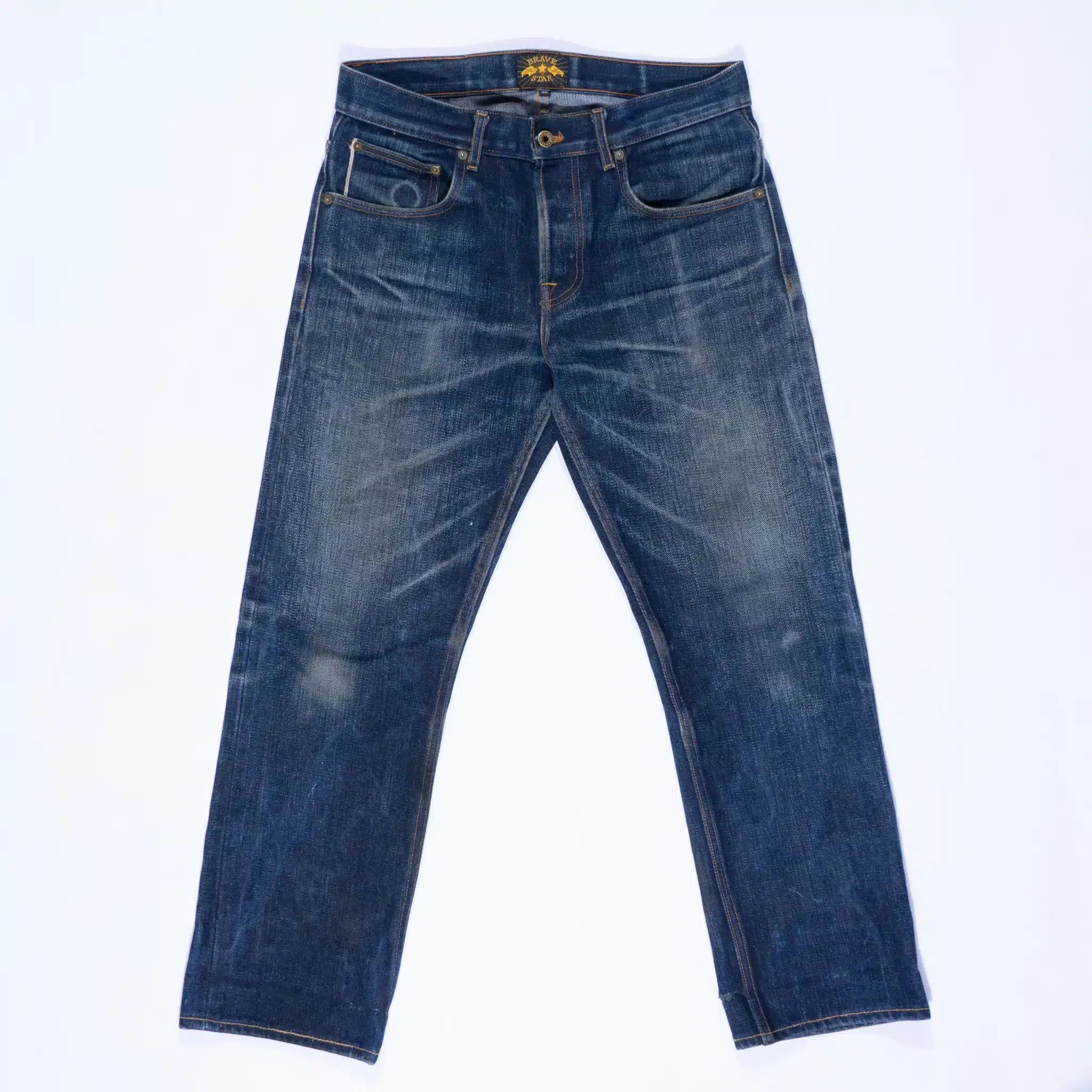
That model has only gotten sharper over time. Brave Star now produces in limited, demand-based pre-order runs that often sell out in a few hours. The 21.5 oz. Gauntlet and 25 oz. Sumo IV show what the brand does best: bold, heavyweight jeans that fade fast, soften quickly, and deliver serious value for money.
If you want to experience heavyweight denim the American way—built local, priced fair, and driven by demand—Brave Star is the one to check out.
If you’re curious how Brave Star does it—and which pairs stand out most—I’ve broken it all down in my complete Brave Star guide.
KATO: The Stretch Revolution
Heritage meets comfort—that’s the KATO way. Founded in Los Angeles by Nick Noguchi, the brand reimagines heritage style for modern life, proving that selvedge denim doesn’t have to hurt to look good.
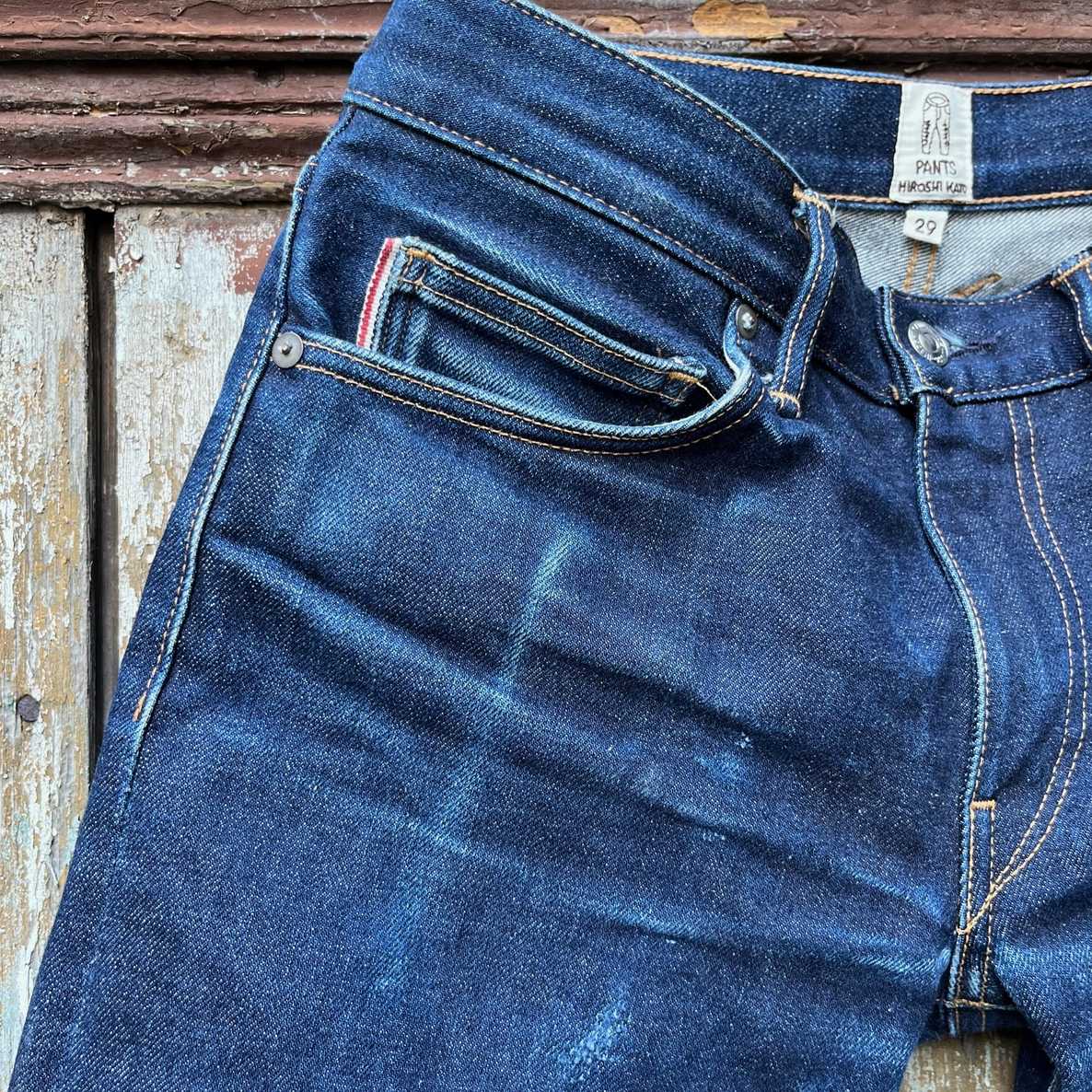
Every pair is cut and sewn in KATO’s LA factory under Noguchi’s eye, but the brand’s claim to fame is its 4-Way Stretch Selvedge. Yes, you read that right—stretch in heavyweight raw denim, and both and weft and warp (most stretch denim only has it in the weft).
Purists once scoffed, but the 17.5 oz. Mammoth Selvedge turned skeptics into believers: dense, durable, and fade-ready, yet flexible from day one. Proof that innovation can coexist with authenticity.
Curious how the Mammoth Selvedge performs? Read our review here.
JAPANESE HEAVYWEIGHT SPECIALISTS
If you picture the heavyweight pioneers as the festival headliners—with hits everyone knows the chorus of—then these Japanese specialist brands are the underground acts with cult followings. They’re represent the experimental side of heavyweight denim: sometimes mystic, always uncompromising, and deeply authentic.
Oni Denim: The Secret’s in the Slubs
Founded by Masao Oishi, Oni built its cult following on fabrics that feel alive: wildly irregular, ultra-low-tension, and an unmistakable “hairy” texture. Oishi-san himself, a denim veteran with more than six decades of experience, is the son of the man who helped bring American denim to Japan in the 1960s.
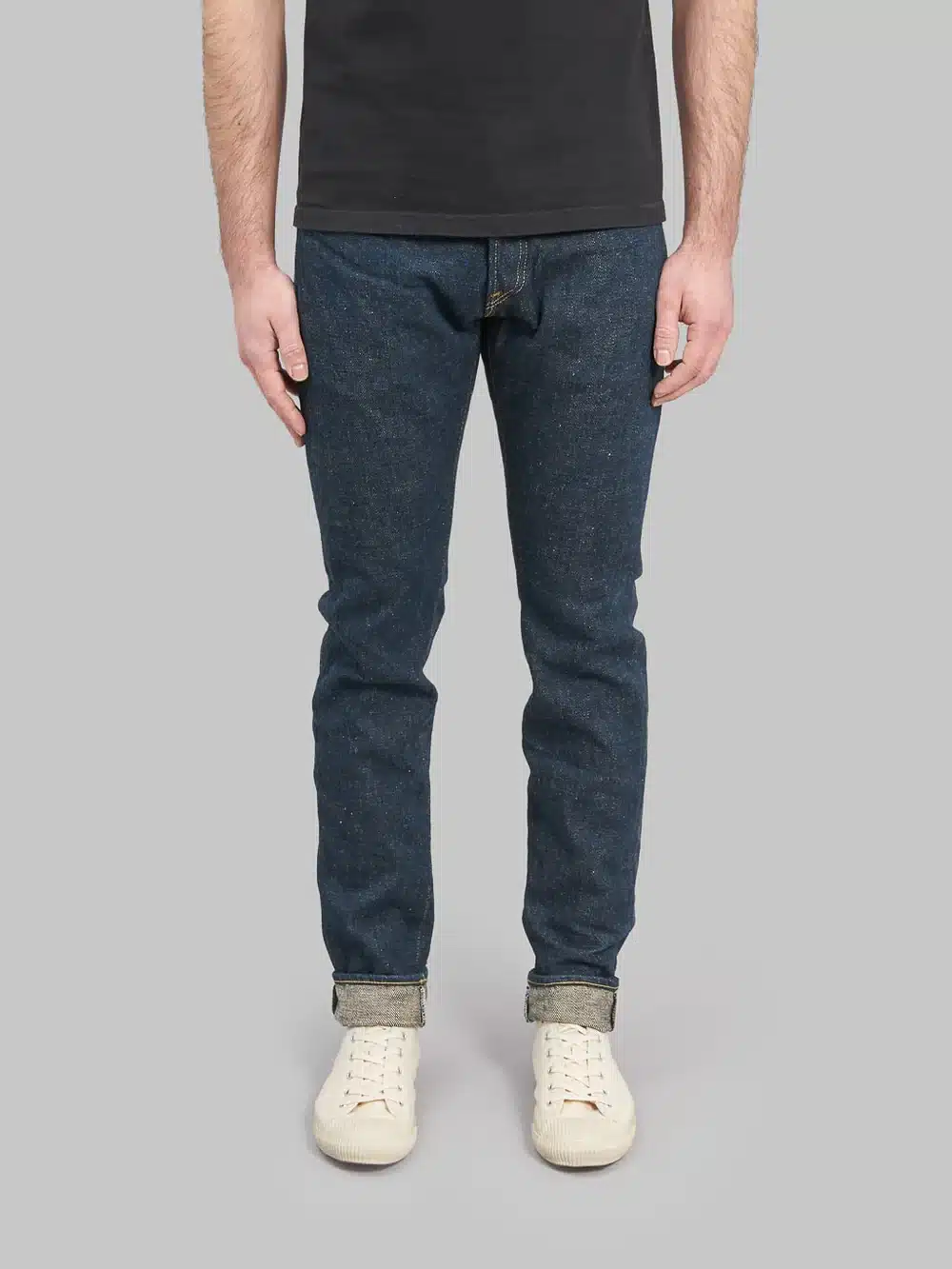
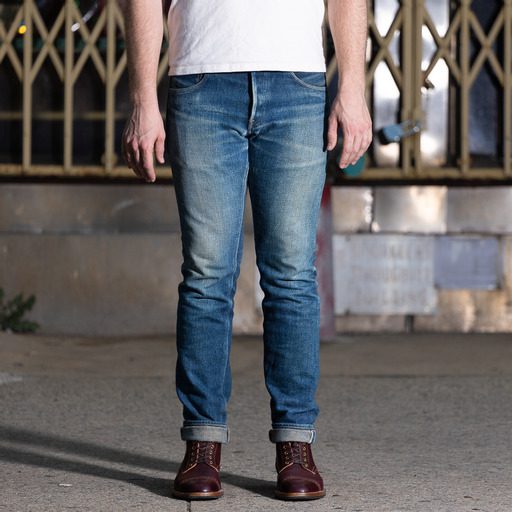
At the centre of it all is the Secret Denim, a 20 oz. slubby blend of three cotton types, rope-dyed with Oishi-san’s closely guarded indigo recipe. The name isn’t just marketing. Few outside his circle know exactly how it’s made, and even fewer can reproduce it. The result is denim that softens quickly, fades slowly, and reveals deep, misty blues as the ecru weft breaks through.
The man is as much a mystery as the denim itself and seldom speaks publicly about his work—but we got a rare glimpse into his process through Redcast Heritage as proxy in this review. And perhaps that’s the point: every Oni fabric carries a secret, woven into its slub and indigo.
Pure Blue Japan: The Art of Subtle Texture
Ken-ichi Iwaya founded Pure Blue Japan in 1997 with a simple goal: to make denim with soul. Soft-spoken and endlessly kind, Iwaya-san builds jeans much like his personality—humble, meticulous, and quietly confident. His jeans prove that character doesn’t need to shout.
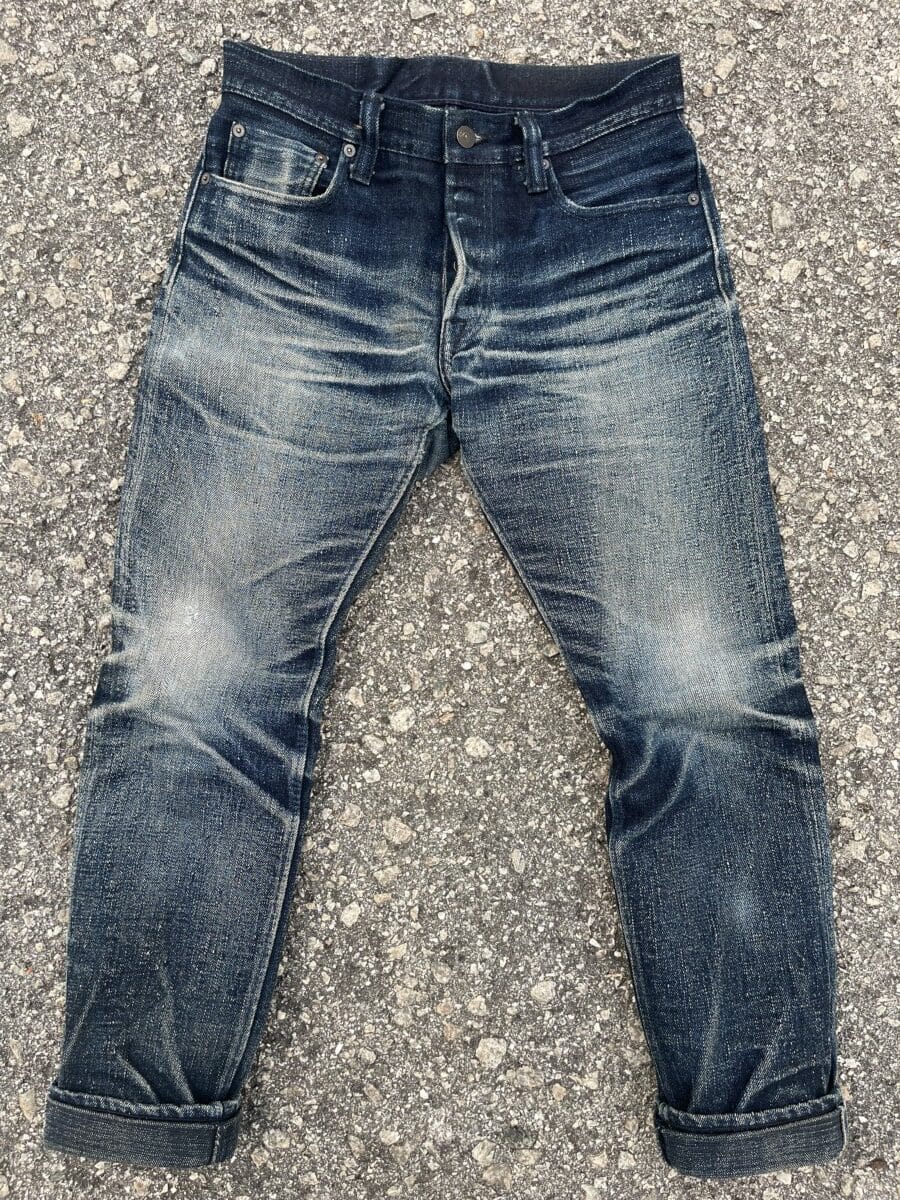
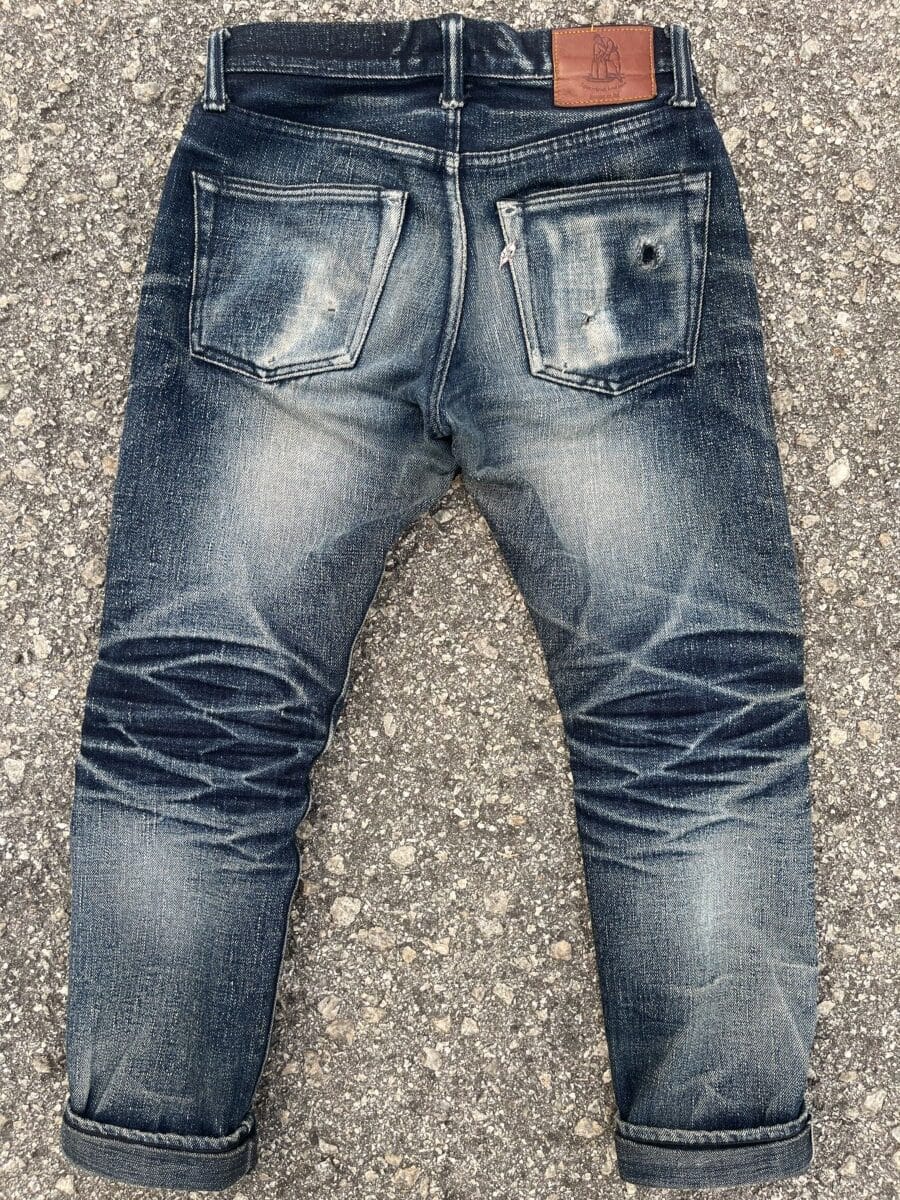
PBJ’s hallmark is texture, but not for the sake of texture. The brand’s low-tension weaves and irregular yarns create denim that feels organic—hairy, uneven, and deeply tactile—yet somehow refined. It’s rugged craft distilled into elegance, where every imperfection feels intentional.
The heavier denims in the 16–18 oz. range show that balance best: dense but breathable, vivid yet understated. Whether it’s the slubby XX series or the natural-indigo Aizome runs, every fabric carries PBJ’s calm precision.
You can buy Pure Blue Japan at: Redcast Heritage (ES), Hinoya (JP), Brooklyn Clothing (CA), Blue in Green (US)
The Strike Gold: The Final Challenge
You don’t start your heavyweight journey with Strike Gold!
This is the ten-meter diving platform of denim—the one that looks fine from the ground until you’re standing up there, toes over the edge, realising there’s no easy way down.
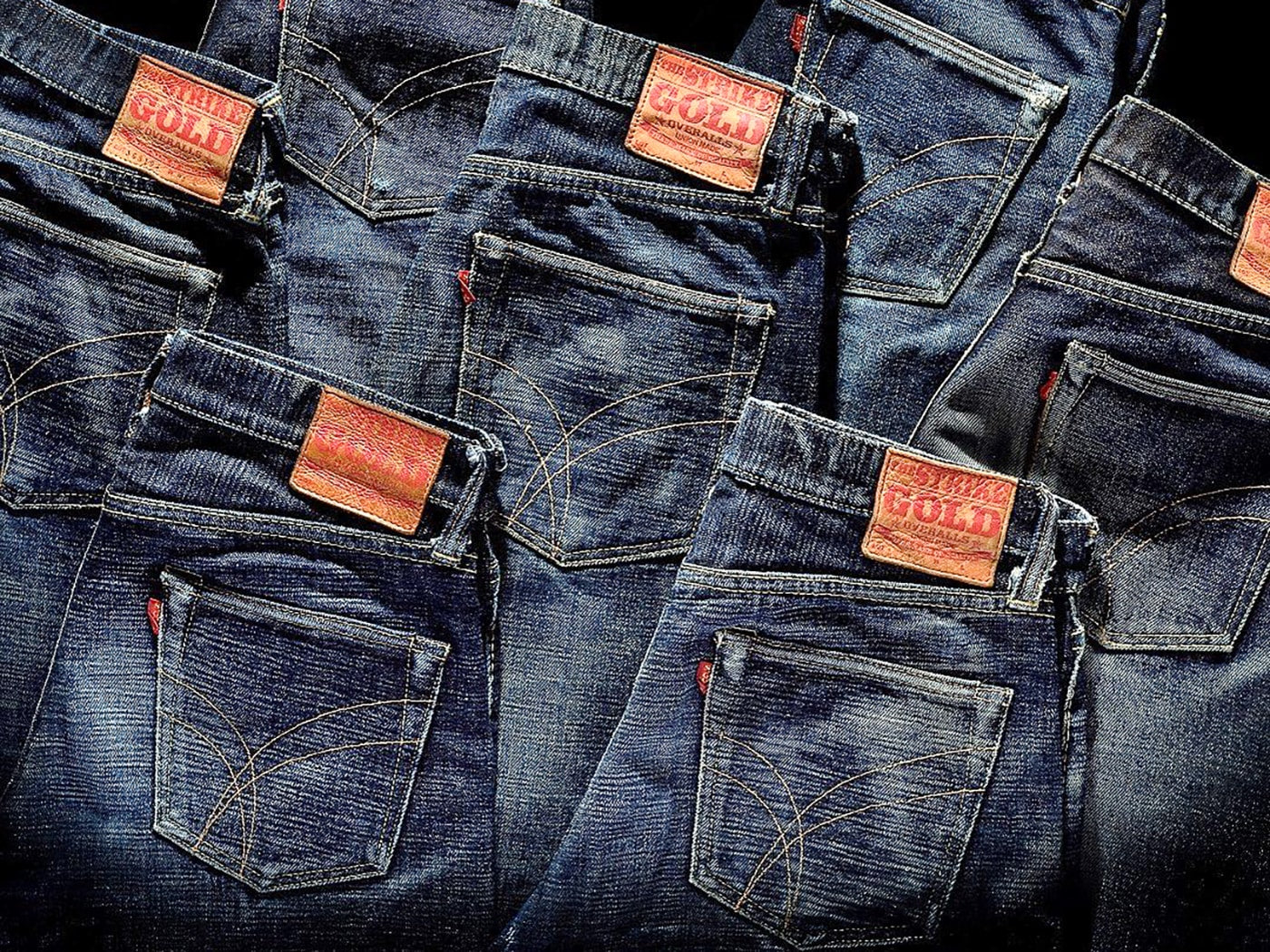
The brand is family-run from Kojima and it’s built on one obsession: tension. Every fabric fights you at first—stiff, unyielding, and dense enough to snap needles in production.
The 24.8 oz. Extra Hard denim is notorious for a reason: punishing at the start, but once it yields, it rewards you with fades that look earned, not given.
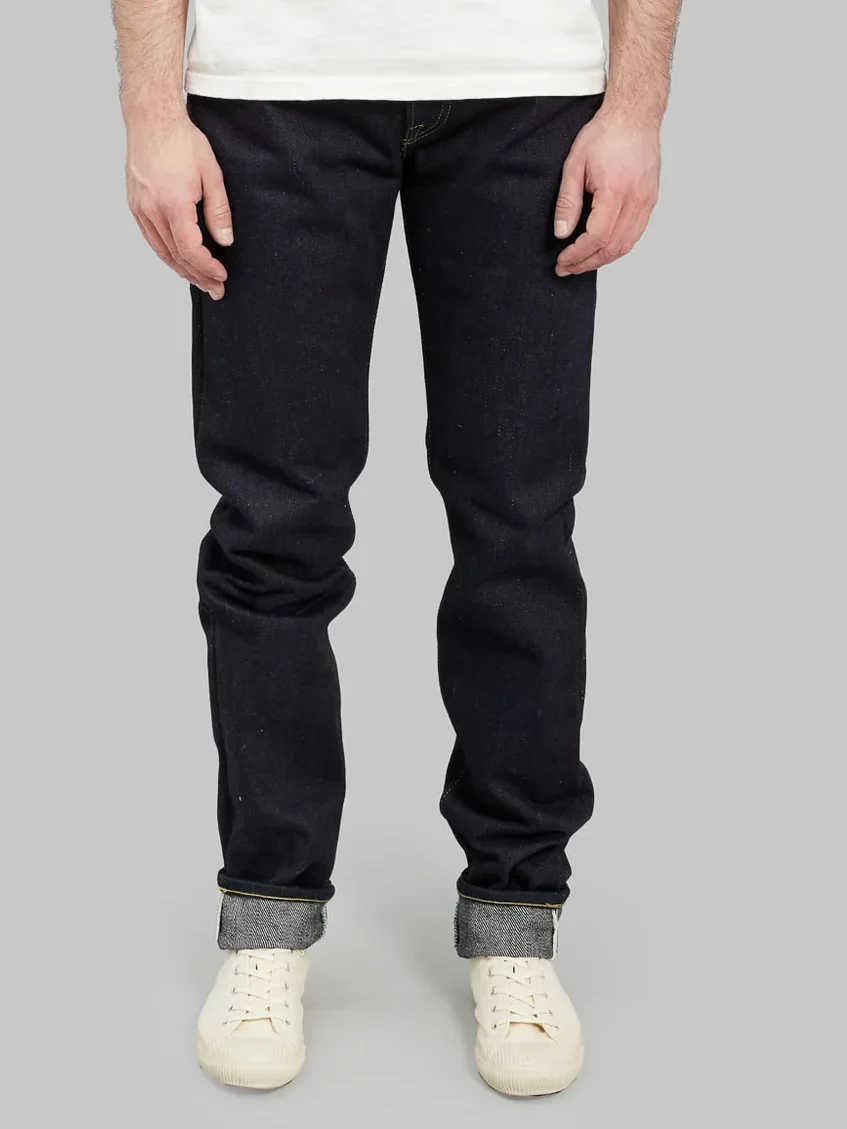

The 17 oz. version? That’s the three-meter platform—still a serious jump, but one you’ll survive. The denim carries the same DNA—tight weaves, raw texture, and unpredictable fades, just a little less brutal on impact.
I haven’t tried Strike Gold myself yet, but those who have describe it like a leap they’ll never forget: terrifying at first, but pure satisfaction once you come up for air and see the fades.
More Great Heavyweight Denims
The brands below don’t live in the heavyweight lane full-time, but they know how to handle it. These are just a few of the (many) other great heavyweight denims out there—worth both the price and the pain.
Benzak’s 18 oz. Heavyweight Selvedge
Woven by Collect in Kojima, this 18 oz. dark indigo selvedge combines deep, fixed indigo tones with a subtly uneven texture.
The low-tension weave adds quiet character without bulk, and the dense construction gives it that crisp, structured feel Benzak does so well.
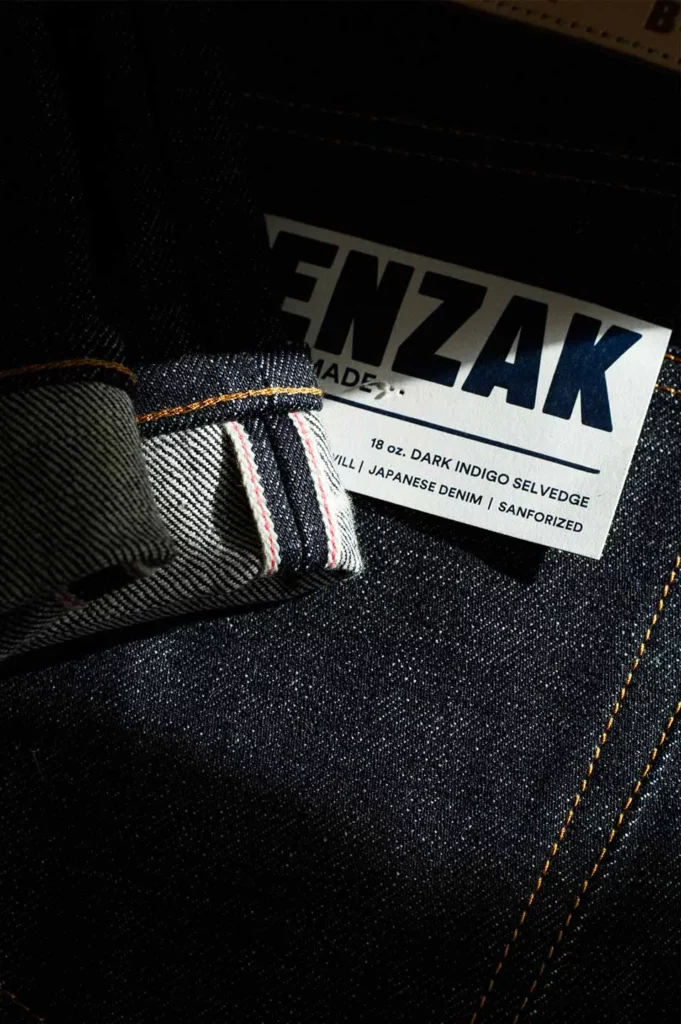
The Flat Head’s 18 oz. Doshaburi Selvedge
A storm of vertical slub defines The Flat Head’s “Doshaburi” selvedge (that’s Japanese for “torrential downpour”).
Rope-dyed indigo yarns and a dense weave give it a structured hand that softens with wear, revealing striking, rain-like fades with the deep blues.

Indigofera’s Shiroyama 18 oz. Selvedge
The heavyweight selvedge from Indigofera blends American cotton with Japanese precision, producing a dense, uneven fabric with real vintage grit. The heavy weft adds texture and weight, while a rinse brings out its soft, hairy character.
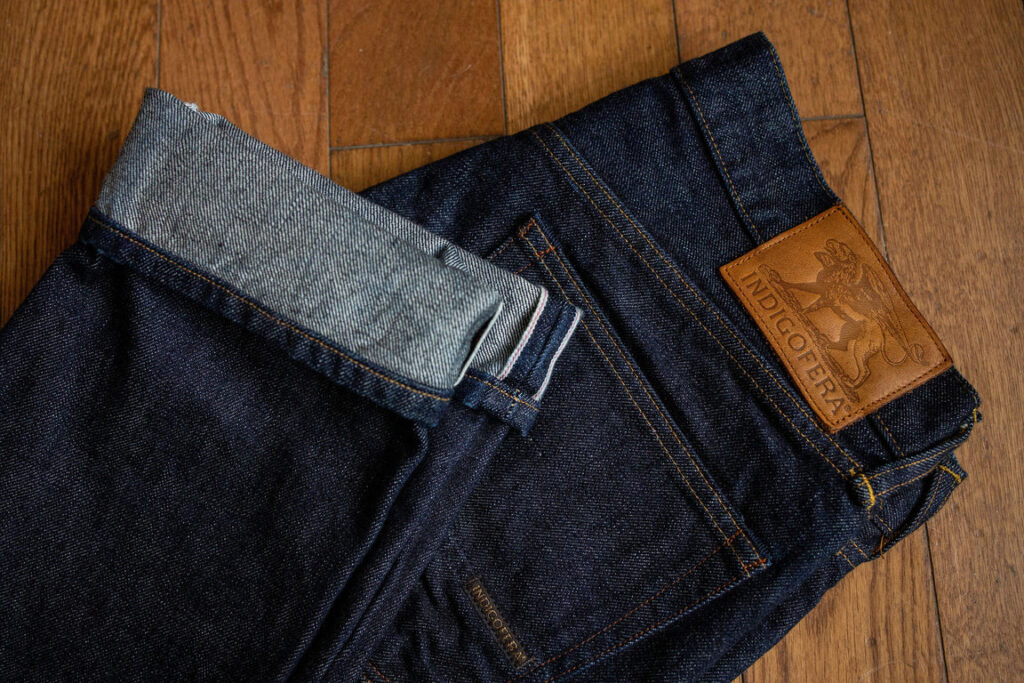
Tellason’s 16.5 oz. Selvedge
Reengineered with Kaihara after Cone Mills’ closure, Tellason’s heavyweight is a dense, dry denim with a crisp hand and dramatic fade potential—showing deep contrasts as it wears in. Available across all core fits, it’s rugged and dependable.

Momotaro: 15.7 oz. Selvedge
Momotaro’s flagship selvedge sits just shy of heavyweight, yet few fabrics carry more pedigree. The weave is crisp but pliable, the fades refined rather than brash—a benchmark middleweight that shows just how far mastery can go without sheer weight.
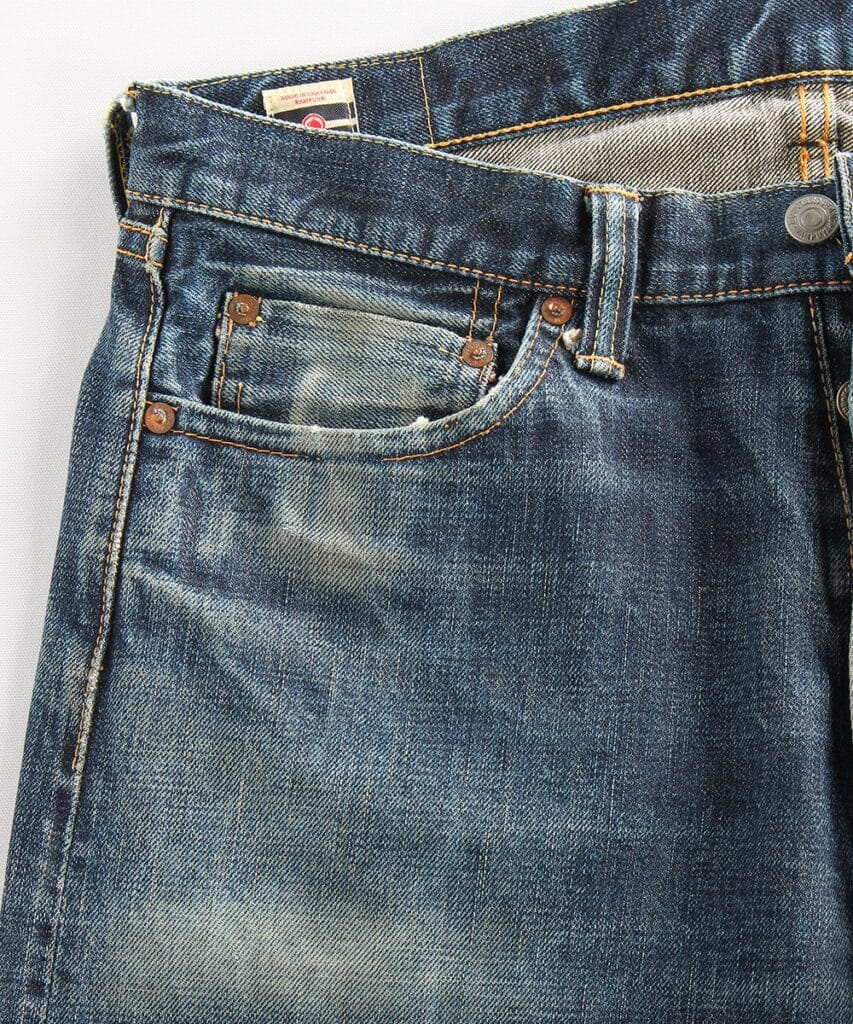
10 FAQs About Heavyweight Denim, Answered
I’ve covered the big picture—what heavyweight denim is, who makes the best, and why it matters. If you still have questions before taking the plunge, don’t worry, you’re not alone. Here are my answers to the most commonly asked heavy denim questions.
FAQ #1: What exactly is “heavyweight denim”?
Denim weight is measured in ounces per square yard (oz.). Anything above 16 oz. falls into the heavyweight category.
To give you an idea, most mass-market jeans today are in the 10–12 oz. range. That’s light compared to the fabrics used by selvedge specialists, where 14–15 oz. or more is common.
FAQ #2: Why does the weight of denim matter so much?
Two big reasons: durability and fades.
Heavier denim is denser and usually lasts longer. I’ve worn 25 oz. jeans for nearly two years before the crotch finally blew out; much longer than it would have with lighter denim.
And then there’s fading. Thicker denim (generally) holds creases better, which translates into higher-contrast fades. The stiffness matters as much as the weight. Some heavy denim is surprisingly soft, while compact midweights can feel like armour and fade just as dramatically.
FAQ #3: Where’s the cutoff point for heavyweight denim?
By my definition, heavyweight starts at 16 oz.—but in practice, some 16 oz. denims don’t feel heavy at all.
If you want that true heavyweight feel, look for 18 oz. and up. Remember, it’s not just about the number—yarn size and weave density also change how a fabric wears (that’s just a bit harder to find information about—but ask for it).
FAQ #4: How long does it take to break in heavyweight jeans?
It depends on the denim, but a few weeks of wear is normal before they start to feel comfortable. Super heavy stuff can feel brutal at first.
My advice: always give them a soak before wearing (see how here). It sets creases and removes the starch, which softens the fabric without much indigo loss. Once broken in, heavyweight denim can be surprisingly comfortable.
FAQ #5: Do heavyweight jeans fade faster?
Not necessarily. Some heavyweights fade quickly and sharply, others more slowly and subtly. “Normal” weight denim can do both as well.
Fading speed has more to do with yarn construction and dye penetration than sheer weight. What heavy denim does almost always deliver is more dramatic contrast once the creases start forming.
You can learn more about spinning, dyeing and how denim is made in my Denim Encyclopedia.
FAQ #6: How should you care for heavyweight denim?
Treat it like any raw denim: wear it hard, wash when needed, repair early. Heavy denim is tougher, but it’s still denim.
Soak before first wear, then wash gently when necessary (inside out, hang dry). Don’t ignore repairs—heavy or not, crotches and knees will eventually give out if you do.
FAQ #7: Can you wear heavy denim in summer or hot climates?
Yes, but it’s not for everyone.
Lots of faders in Southeast Asia wear 20+ oz. jeans year-round in heat and humidity. Personally, I prefer lighter weights in hot weather (sometimes I even wear shorts; I know, a shocking image).
If you do go heavy, consider a looser fit for more airflow. Some fabrics, like Iron Heart’s 21 oz., are surprisingly breathable. Others, like ultra-dense 25 oz., can be suffocating.
FAQ #8: How should you size heavyweight denim?
First, study the size chart, and check if the jeans are pre-shrunk. Unwashed unsanforized denim shrinks up to 10%. Even sanforized heavyweights shrink a bit on the first wash.
My rule: never size too small. A too-tight fit in 20+ oz. denim is not only uncomfortable—it’ll wear out faster in stress points.
FAQ #9: Does heavyweight denim always last longer?
Generally, yes. But how they fit and what you do in them matter just as much.
Thicker yarns and denser fabrics resist wear better. But I’ve blown out 25 oz. jeans in just 6 months because they were too tight and unsoaked (I didn’t follow my own advice).
FAQ #10: What are the trade-offs of heavyweight denim?
Comfort and cost. Heavy jeans are harder to wear in, hotter in warm climates, and more expensive to produce.
Not many mills make denim this heavy, and production of selvedge denim is slow. But the payoff is durability (generally speaking), dramatic fades (in general as well), and your satisfaction of passing the heavyweight rite of passage.
Heavyweight Denim Is Earned in Every Ounce
Out of breath? Welcome to the world of heavyweight denim—jeans that demand more stamina than anything you’ve worn before.
But if you’ve made it this far, if you’ve actually read it all and you’re still interested, I think you’re ready to step up into the heavyweight division.
Just remember, you don’t earn comfort or fades overnight; you have to put in the work. The jeans resist, then relent, and finally become yours in a way few things do.
Join 11,000+ Denimheads Who Get My Emails
You’ve finished this article—hope you learned something new. How about more like it, delivered to your inbox every Friday?
Hey, it’s Thomas here, founder of Denimhunters. I send weekly emails with buying tips, denim knowledge, and practical style advice for guys who care about what they wear.
The post The Best and Toughest Heavyweight Selvedge Jeans appeared first on Denimhunters.
DENIM and PATCHES sourced this post originally published on this site